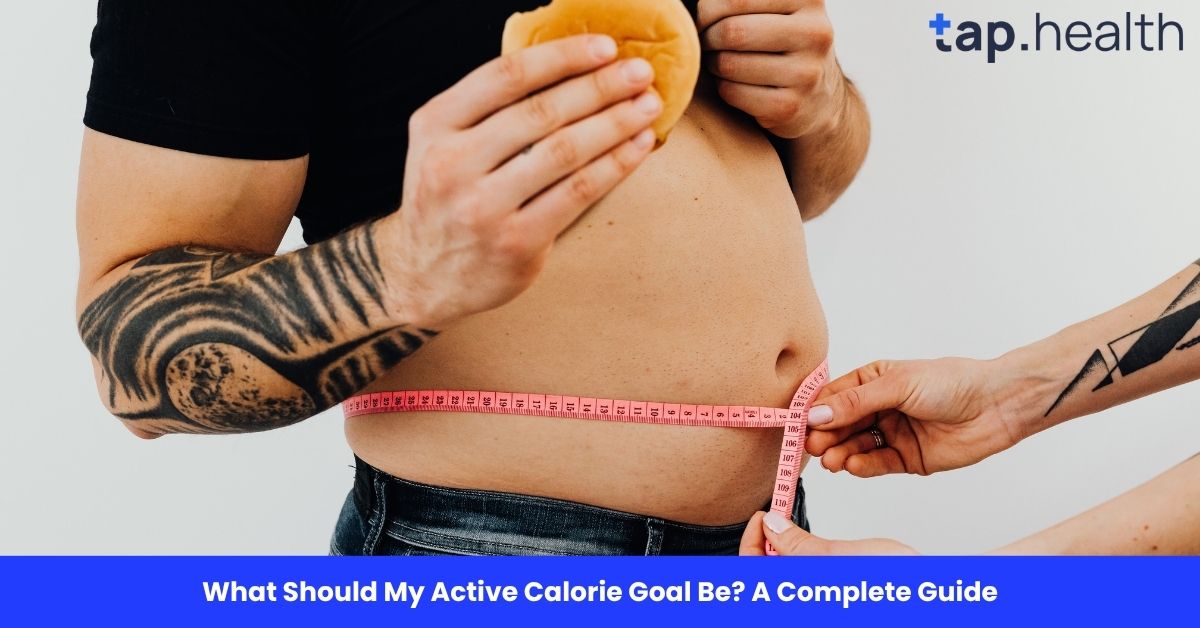When you’re on a journey to improve your health and fitness, one important question comes up: what should my active calorie goal be? Whether you’re looking to lose weight, maintain your current weight, or increase muscle mass, understanding your active calorie target is essential for success.
In this guide, we’ll break down what active calories are, how to calculate your ideal goal, and what factors influence this target. By the end of this article, you’ll know exactly how to set your active calorie goal and why it matters for achieving your health and fitness objectives.
What Are Active Calories?
Active calories are the calories your body burns during physical activities like walking, running, exercising, or even doing household chores. Unlike resting calories, which your body burns just by performing basic functions like breathing and digestion, active calories come from any kind of physical exertion.
For example, when you go for a walk, run, or lift weights, your body burns additional calories on top of your resting energy expenditure. The more intense the activity, the higher the number of active calories you burn.
Active vs. Total Calories
It’s important to differentiate between active calories and total calories. Your total calorie expenditure includes both active calories and the calories you burn at rest, often referred to as your Basal Metabolic Rate (BMR).
- Active Calories: Calories burned during physical activity.
- Total Calories: Calories burned from all activities, including your BMR and physical exertion.
Understanding how many active calories you burn can help you better track your fitness progress and manage your calorie intake.
How Do I Calculate My Active Calorie Goal?
Setting an appropriate active calorie goal depends on a variety of factors. The goal you choose will depend on your personal health objectives, such as weight loss, weight maintenance, or muscle gain. Below is a step-by-step guide to calculating your active calorie goal.
1. Determine Your Basal Metabolic Rate (BMR)
Your BMR represents the number of calories your body needs to perform basic functions, such as breathing, digestion, and circulating blood, while at rest. It’s the foundation for your calorie goals.
You can calculate your BMR using the Harris-Benedict Equation:
- For men:
BMR = 88.362 + (13.397 × weight in kg) + (4.799 × height in cm) – (5.677 × age in years) - For women:
BMR = 447.593 + (9.247 × weight in kg) + (3.098 × height in cm) – (4.330 × age in years)
This gives you the number of calories your body burns at rest. From there, you can calculate your Total Daily Energy Expenditure (TDEE) by factoring in your activity level.
2. Factor in Your Activity Level
Next, you’ll need to account for how active you are. This is where your active calorie goal comes into play. Depending on your lifestyle, you can use one of the following activity multipliers to estimate how many calories you burn in a day:
- Sedentary (little or no exercise): BMR × 1.2
- Lightly active (light exercise/sports 1-3 days/week): BMR × 1.375
- Moderately active (moderate exercise/sports 3-5 days/week): BMR × 1.55
- Very active (hard exercise/sports 6-7 days a week): BMR × 1.725
- Super active (very hard exercise or physical job): BMR × 1.9
By multiplying your BMR by the appropriate factor, you’ll get your TDEE, which is the total number of calories your body burns in a day, including active calories.
3. Set Your Active Calorie Goal
Now that you know your TDEE, you can set your active calorie goal. If your goal is to lose weight, you’ll need to create a calorie deficit by reducing your calorie intake or increasing your physical activity. To gain muscle, you’ll need a calorie surplus.
- For Weight Loss: Aim for a calorie deficit of around 500 calories per day. This would lead to a gradual and healthy weight loss of about 1 pound per week.
- For Muscle Gain: Aim for a calorie surplus of around 250-500 calories per day.
- For Weight Maintenance: Maintain your TDEE by balancing your calorie intake with your active calories burned.
What Factors Affect My Active Calorie Goal?
Your active calorie goal is influenced by several personal factors. Here’s a breakdown of what matters the most:
1. Age
As you age, your metabolism tends to slow down, which means you may burn fewer calories at rest. This can affect your active calorie goal, as older individuals may need to adjust their targets based on how their body responds to physical activity.
2. Gender
Men generally have more muscle mass than women, which means they tend to burn more calories, even at rest. As a result, men may have a higher active calorie goal than women, even if they are of similar weight and activity levels.
3. Weight and Body Composition
People with more muscle mass burn more calories than those with a higher percentage of body fat. Therefore, individuals who are more muscular may have higher active calorie goals since muscle burns more energy during activity.
4. Fitness Level
If you’re just starting your fitness journey, your body may burn fewer calories during exercise compared to someone who is more experienced. As you get fitter and your endurance improves, you may burn more calories while doing the same activity.
5. Exercise Type
The intensity and duration of your workout will influence how many active calories you burn. For example, high-intensity interval training (HIIT) or weightlifting typically burns more active calories than moderate exercises like walking or yoga.
Why Should I Set an Active Calorie Goal?
Setting an active calorie goal is essential for a number of reasons:
1. Helps You Reach Fitness Goals
Whether you want to lose weight, gain muscle, or maintain your current weight, having an active calorie target ensures that you stay on track. It helps you manage your diet and exercise to reach your goals more efficiently.
2. Keeps You Accountable
When you have a clear active calorie target, it’s easier to stay motivated and hold yourself accountable. Tracking how many calories you burn during physical activity helps you stay focused and committed to your fitness plan.
3. Improves Health and Wellness
By setting a reasonable active calorie goal, you ensure that you’re getting enough physical activity to promote heart health, improve mental well-being, and reduce the risk of chronic diseases like diabetes and obesity.
How Do I Track My Active Calories?
Tracking your active calories is simple and can be done in several ways:
1. Fitness Trackers
Wearable devices like Fitbit, Apple Watch, or Garmin can track your active calories based on your heart rate, movement, and workout intensity. These devices provide real-time data to help you stay on top of your calorie goals.
2. Fitness Apps
Many fitness apps, like MyFitnessPal and Strava, allow you to log your physical activities and track how many active calories you burn during each session.
3. Manual Tracking
If you don’t use a fitness tracker, you can estimate the number of calories you burn during various activities using online calorie burn calculators or charts. These tools can give you an estimate based on your weight and the activity you’re doing.
Real-Life Scenario
Imagine a 35-year-old woman weighing 70 kg who works at a desk job but exercises 4–5 times a week. Her daily calorie burn might range between 1,900–2,200 calories, with active calories accounting for about 400–600 of that total depending on workout intensity.
Tracking and adjusting based on your actual activity ensures your goals stay realistic and sustainable.
Expert Contribution
Fitness professionals suggest setting your active calorie goal at 15–30% of your total daily energy expenditure (TDEE). This means if you burn 2,000 calories a day, aiming for 300–600 active calories is a healthy and achievable target.
Registered dietitians and exercise physiologists emphasize the importance of pairing this with balanced nutrition and recovery to avoid burnout.
Recommendations Grounded in Proven Research and Facts
According to the American College of Sports Medicine (ACSM) and Harvard Health Publishing, consistent moderate activity (like brisk walking or cycling) helps burn 150–300 calories in 30 minutes.
Research also supports combining aerobic and resistance training to boost metabolism and increase active calorie burn efficiently.
- Beginners: Aim for 200–400 active calories daily
- Intermediate: 400–600 calories
- Advanced or highly active individuals: 600–900+ calories
Frequently Asked Questions (FAQs) on What Should My Active Calorie Goal Be?
1. How many active calories should I burn in a day?
The number of active calories you should burn depends on your fitness goals. If you’re looking to lose weight, aim for a calorie deficit of 500 calories per day. For weight maintenance, try to match your active calories with your calorie intake. For muscle gain, focus on a slight calorie surplus.
2. How do I know if my active calorie goal is realistic?
Your active calorie goal should be based on your TDEE and personal fitness objectives. If you’re aiming for weight loss, a 500-calorie deficit is realistic. For weight maintenance or muscle gain, focus on matching your calorie intake with your energy expenditure.
3. What activities burn the most active calories?
High-intensity activities like running, cycling, swimming, and HIIT workouts typically burn the most active calories. Strength training also burns calories, especially if you’re lifting heavy weights or doing compound movements.
4. How can I increase my active calorie burn?
To increase your active calorie burn, consider adding more intense activities like interval training or strength training. Also, increasing the duration of your workouts or incorporating more movement throughout the day, such as walking or taking the stairs, can help.
5. Can I lose weight by just tracking active calories?
Tracking your active calories is an important part of weight loss, but it should be combined with mindful eating. Creating a calorie deficit by consuming fewer calories than you burn, including your active calories, is essential for weight loss.
Conclusion
Setting an active calorie goal is a powerful tool to help you achieve your fitness objectives. Whether you’re focused on weight loss, muscle gain, or weight maintenance, understanding your active calorie needs will help you stay on track and make informed choices about your activity and nutrition. By tracking your active calories and adjusting your fitness routine accordingly, you can make meaningful progress towards your health goals.



